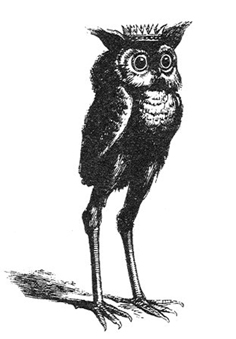Introduction to Hell
In most religions, Hell is an understandably bleak place. It has an abundance of fire and brimstone (with ice substituted for fire once in a while, as in some Buddhist Narakas) and little else of interest, and if not for the endless torture, it would be rather boring to be there (in fact, as anyone who has read "Faust Eric" will remember, boredom itself just might be the ultimate torture). Especially in Abrahamic religions, notable aspects of Hell such as its denizens, the forms of torture the sinners will undergo and the general
geography and important
landmarks of the underworld are seldom described. We know almost nothing of Hell, except that it's a pretty bad place to be in.
This has proved to be rather troublesome. People dislike uncertainty, and Hell is essentially an entire realm of just that, so medieval writers spiced the place up a bit by making up demons to populate it (often in an attempt to defame the gods of pagan societies by presenting them as demons) and giving them distinct abilities and personalities (yes, it's essentially ancient fanfiction). Other writers, both medieval and modern, reading about the powers of these made-up demons, thought that they'd make good henchmen and came up with ways to conjure them and make them do the dirty jobs. As you might expect, things quickly got out of hand, and now we're left with the craft of demonology, a Dirac sea of boundless insanity that no sane man would subscribe to (well, Newton was actually pretty keen on the occult, but I digress).
This column will be about such insanity -- specifically, I will try to detail a few demons from the Lesser Key of Solomon, one of the most famous grimoires.
A great and mighty Prince of Hell, Stolas commands 26 infernal legions. He also looks like a Furby crossed with a crane and is the cutest demon lord I've ever seen. He is not a malignant force but a revered teacher, offering guidance on identifying poisonous plants and precious gems. (In fact, many Goetic demons act as advisors and teachers. I wish Bilkent hired them as instructors -- I bet a recommendation letter from King Asmodeus would get you pretty far. As a matter of fact, Asmodeus is said to have many daughters and to seek good husbands for them, so with some luck, you might be able to become his son-in-law and enjoy your new job as a Prince of Hell instead of bothering with silly things like a career.)
Phenex is another demon bordering on the adorable. This Great Marquis of Hell (Hell has a social hierarchy, you see, with each notable demon being given a title) takes the form of a phoenix (who'd have guessed!) and is knowledgeable in all sciences, as well as an excellent poet. He always does his best to help the conjurer and never seeks to harm him, for he hopes to return to Heaven (in fact all Goetic demons are fallen angels, and some of them seek redemption, assisting humanity in the hope of being allowed back into Heaven). Unfortunately for Phenex, he is deceived in this hope and all his hard work is in vain -- his damnation is truly eternal, and you can almost feel sorry for the poor demon.
There are also several demons notable for looking absolutely ridiculous -- Stolas is a good example, but there's also Andras the wolf-riding murderous owl-man, Buer the lion-head-on-a-wheel-of-goat-legs and many others who either have unusual descriptions to begin with or are illustrated in a bizarre manner. It might be worth your while to take a look at some of these illustrations using Google.
While you might think that the age of demonology and bizarre rituals is over, this is far from the case! In my travels through the Internet, I have come across a large image with the sigils of all the notable demons, and a wily fellow had the idea to add the circuit diagram symbol for a capacitor to the image and see if anyone caught on. He also inserted a caption below the faux "sigil": "CAPACIA -- LORD OF STORAGE."
A new demon lord was born.